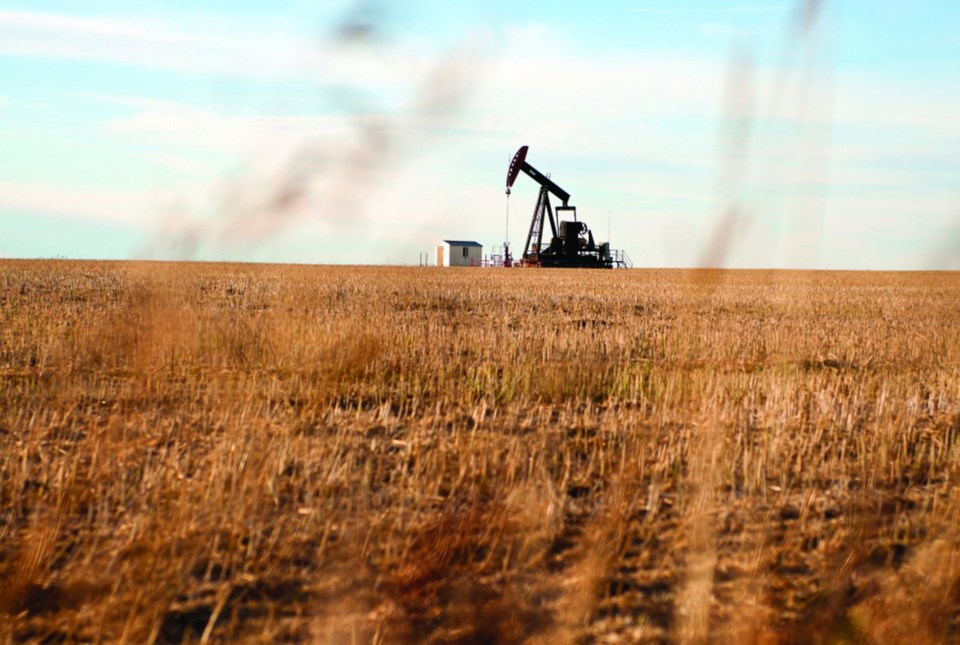LAKELAND, ALBERTA – In 2007, Alberta became the first jurisdiction in North America to legislate GHG (greenhouse gas) emission reductions for large industrial facilities that emit 100,000 tonnes or more of greenhouse gases a year.
Since then, the province has taken more steps in improving efficiency of oil and natural gas extraction, and has also been investing in ways to repurpose, capture and store carbon dioxide (CO2) and other emissions through funds collected by the province’s carbon levy, the Technology Innovation and Emission Reduction (TIER) fund.
At the Beginning of March, the Alberta government announced more than $2 million from the TIER fund would be redirected to Emissions Reduction Alberta (ERA) to finance, in part, four Alberta-based projects that involve Carbon Capture, Utilization, and Storage (CCUS).
The funding for these projects, with an estimated value of $24 million, was made possible through the international partnership Accelerating CSS Technologies (ACT), which unites 15 research and innovation funding organizations from 16 countries. Alberta is the first and only sub-national member in ACT.
“Partnerships and investments like these are critical to helping Alberta leverage investments in CCUS,” said Minister of Environment and Parks Jason Nixon.
“These innovative, world-class technologies will increase the value of our natural resources. These projects build on Alberta’s existing CCUS investments like Shell Quest, the Alberta Carbon Trunk Line and the Alberta Carbon Conversion Technology Centre, making our province a key player in developing solutions and knowledge to share with the world.”
ACT members include funding agencies from Alberta, Denmark, France, Germany, Greece, India, Italy, the Netherlands, Norway, the Nordic Region, Romania, Spain, Switzerland, Turkey, the UK, and the United States.
Alberta CCUS projects
The four CCUS projects that will be based in Alberta or will have a portion of research carried out in the province are among 13 total projects that were chosen by a consortium of ACT members in the organization’s third call for project proposals in 2021.
One of the Alberta projects includes capturing and converting carbon dioxide, methane and waste heat from a cement plant into substances that can be used in the building Carbon Nanofibre. This project titled CREATE was proposed by the Carbonova Corporation.
“The carbon dioxide level in the atmosphere is a problem that exists beyond geographical borders, and it requires creating a solution that is globally applicable while managing the world's demand for energy, sustainable food, a place to live and transportation for everyone,” stated Mina Zarabian, the co-founder and CEO of Carbonova.
She added that the province’s financial support through ERA and ACT “is enabling contributions among nations to address one of the most pressing challenges of our time while providing an opportunity for Canadian-developed innovation to be implemented globally.”
The other three projects focus on the transportation sector's movement of carbon dioxide and projects that will use depleted oil and gas reservoirs to safely and cost-effectively store CO2 at sites long-term.
ENSURE, a University of Alberta project “will demonstrate the use of microseismic monitoring for seal integrity verification for large-scale carbon capture and sequestration (CCS) projects,” according to ERA’s website.
RETURN, a project proposed by Carbon Management Canada “will focus on enabling CO2 injection and storage into depleted oil and gas reservoirs for long-term CO2 storage by developing novel solutions for overcoming injection challenges,” states ERA.
“Commercial-scale implementation of new technologies and innovative ideas is a critical part of optimizing our business and contributing to society’s net-zero goals,” wrote Science Director Don Lawton for Carbon Management Canada.
“This funding will advance and accelerate our project, which has the potential to significantly increase capacity for permanent geological storage of carbon dioxide in Alberta.”
Another U of A project, ACTION, “will establish how an efficient infrastructure, connecting CO2 sources with CO2 geological storage and non-geological utilization options, can be developed as part of regional decarbonization efforts,” ERA outlines.
By implementing CCUS technology, the Government of Alberta’s goal is to capture, use and store up to 90 per cent of CO2 emissions produced from the use of fossil fuels in industrial activities – preventing those emissions from entering the atmosphere.
“Alberta is already a leader in this area, having taken considerable steps with commercial-scale funding, regulatory enhancements and knowledge sharing,” stated Paul Hamnett, the press secretary for Alberta Environment and Parks, in a press release.
“The government’s latest TIER investment through ERA and partnership with ACT keeps this momentum going.”
The investments supporting Alberta’s four CCUS commercialization projects come from the UK, Germany, France, the Netherlands, Switzerland, Norway, Romania and the United States.



